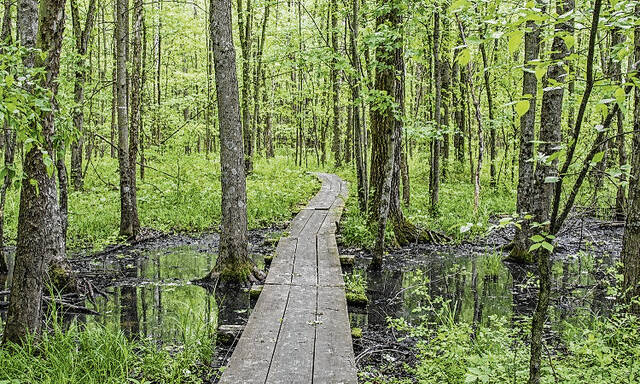
Aim Media Indiana
Southern Indiana — particularly the areas surrounding Camp Atterbury, the Muscatatuck Training Center, Crane naval support base and other defense installations — got a federal designation recently that will preserve natural areas for generations to come.
Some 3.4 million acres of land in Jackson, Bartholomew, Brown, Jennings, Johnson and other southern Indiana counties is now designated the Southern Indiana Sentinel Landscape. That’s a bit of a mouthful, but this designation will help private landowners in the region preserve the wilderness and farmlands that give these areas their unique natural character. It’s just the 10th such designated area in the nation.
Perhaps Larry Clemens, state director of The Nature Conservancy, summed it up best: “This designation gives us important private and public sector tools and expands upon critical partnerships to protect lands, improve water quality, enhance climate resiliency, and preserve the beauty and splendor of southern Indiana.”
Last month, the U.S. Department of Agriculture announced the designation, which involves partnership with the U.S. Department of Defense and the U.S Department of the Interior. These agencies have their own interests in conserving these areas. Counterintuitive as it may seem, lack of development here is the goal and with good reason.
Defense installations perform best with few neighbors, as military training exercises tend to get noisy. As the agencies describe it, sentinel landscapes are “areas in which natural and working lands are well suited to protect defense facilities from land use that is incompatible with the military’s mission.”
So the designation will benefit private landowners by opening up resources to carry out sustainable land management practices. That may be farming, forestry, designated conservation areas or other uses that protect and preserve the natural ecology.
Working with partners such as the Conservation Law Center at Indiana University Maurer School of Law, the Nature Conservancy, Indiana Economic Development Corporation, Indiana Department of Natural Resources, Indiana Defense Task Force and the White River Military Coordination Alliance, landowners in the Southern Indiana Sentinel Landscape will get priority for federal programs that protect wetlands or prevent soil erosion. Nonprofit and charitable incentives also may give landowners incentives to conserve their property.
All of these measures also help mitigate climate change and protect endangered species. In our case, that means some areas within the landscape are designated as critical habitat for the endangered Indiana bat.
“Within the first five years as a sentinel landscape, the Southern Indiana Sentinel Landscape aims to enhance forestland management including oak and hickory regeneration, reforestation projects, and invasive species removal; protect sensitive floodplains and wetland corridors; promote agricultural best management practices; and connect natural lands for habitat and recreation opportunities,” according to the federal agencies.
Seems like a natural fit.
